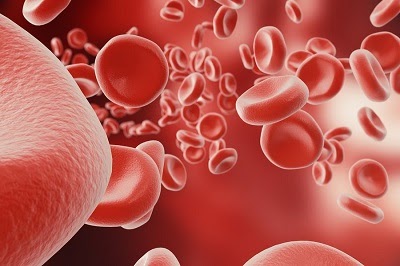Low hemoglobin, also called anemia, occurs when the hemoglobin level in your blood falls below daily levels. Hemoglobin is a protein in red blood cells that is made up of oxygen that is carried from the lungs to the body to relax. When hemoglobin levels are low, your body won’t get enough oxygen, which can lead to the following signs and symptoms: Cutiness.
- Fatigue: Feeling unusually tired or weak.
- Pale Skin: Pale skin, which is more important than traditional.
- Shortness of breath: Trouble breathing or feeling out of breath even with minimal effort.
- Dizziness or lightheadedness: Feeling light-headed or light-headed, especially if the condition rises rapidly.
- Bloodless Arms and Feet: Even when not cold, the limbs feel bloodless.
- Chest pain: In extreme cases, you may become intoxicated by chest pain.
- Common causes of low hemoglobin include:
- Nutritional deficiencies: Loss of iron, nutrient B12 or folate from your weight loss program.
- Chronic diseases: kidney disease, cancer or rheumatoid arthritis, etc.
- Blood loss: due to injury, surgery, menstruation, or gastrointestinal bleeding.
Bone Marrow Problems: Conditions that affect the bone marrow’s ability to provide red blood cells.
Genetic conditions: Conditions including sickle cell anemia or thalassemia.
Treatment of low hemoglobin depends on the underlying motivation and may include nutritional modifications, dietary supplements, medications, or more advanced medical interventions.
Once hemoglobin levels fall significantly below the normal range, they are considered dangerously low, which can lead to serious symptoms that require immediate scientific treatment. Normal hemoglobin ranges vary by age and gender:
Men: 13.8 to 17.2 grams per deciliter (g/dL)
Women: 12.1 to 15.1 g/dL
Children: Varies with age, usually 11 to 16 g/dL
Once the hemoglobin stage falls below the following levels, it is generally considered to be dangerously low:
Guys: Well below 8 g/dL
Girls: Well below 7 g/dL
At these levels, people are at risk for serious symptoms and complications, including:
extreme fatigue
severe shortness of breath
fast heartbeat
chest pain
Fainting or dizziness
Immediate scientific intervention may be critical, including:
blood transfusion
intravenous iron therapy
Drugs made to stimulate the movement of red blood
Treat the underlying cause (e.g., surgery for bleeding, treatment of ongoing disease)
If you suspect that your hemoglobin levels are dangerously low, it is important to seek immediate clinical attention.
The production of purple blood cells (RBCs), or erythropoiesis, is driven by a variety of factors and methods. Key elements include:
Erythropoietin (EPO): This hormone is normally produced by the kidneys and stimulates the bone marrow to supply red blood cells. Low oxygen levels in the blood (hypoxia) cause increased EPO production.
Dietary factors:
Iron: The essence of the production of heme, a key component of red blood cells.
Dietary B12 and Folic Acid: Components of red blood cell precursor DNA synthesis.
Vitamin A and copper: Help iron metabolism and red blood cell production.
Bone marrow health: Bone marrow is where red blood cells are produced. Conditions that affect the bone marrow, including aplastic anemia, leukemia, and myelodysplastic syndromes, may impair red blood cell production.
Hormones: In addition to EPO, hormones such as thyroid hormone, androgens (such as testosterone), and increased hormones also contribute to the production of red blood cells.
Chronic diseases: Conditions including persistent kidney disease, most cancers, and rheumatoid arthritis can impair red blood cell production due to infection, reduced EPO production, or direct effects on the bone marrow.
Genetic factors: Genetic conditions such as sickle cell anemia and thalassemia can affect the production and characteristics of red blood cells.
Drugs and Pollutants: Certain drugs (such as chemotherapy, antiretroviral drugs) and pollutants (such as lead) can damage bone marrow or interfere with the production of red blood cells.
Infections: Some infections, especially those that affect the bone marrow (such as parvovirus B19), can disrupt the production of red blood cells.
Blood loss: Acute or chronic blood loss can stimulate prolonged red blood cell production to compensate, but if the blood loss is severe or prolonged, the body’s ability to produce red blood cells may be exceeded.
Immune system disorders: Autoimmune disorders (such as autoimmune hemolytic anemia) may destroy red blood cells or suppress the bone marrow.
Maintaining adequate nutrition, managing chronic conditions, eliminating toxins, and addressing any underlying health issues are critical to aiding healthy red blood cell production.
How to solve the problem of low hemoglobin?
Addressing low hemoglobin (anemia) involves addressing the underlying cause and may include a variety of remedies and lifestyle changes. Here are some common strategies:
Diet modification:
Iron-rich meals: Include ingredients like red meat, poultry, fish, beans, lentils, tofu, spinach and iron-fortified cereals.
Vitamin B12: Eat dairy products, eggs, meat, fish and fortified cereals.
Folic acid: Eat green leafy vegetables, fruits, nuts, legumes and fortified cereals.
Nutrition C: Supplements iron absorption. Consists of citrus, strawberry, bell pepper and tomato.
Iron dietary supplements: Oral iron supplements (such as ferrous sulfate) are often used to treat iron deficiency anemia. These medications must be taken as directed by your health care issuer.
Vitamin supplements: If dietary intake is insufficient or absorption problems are present, nutrient B12 and folic acid supplements may be essential.
drug:
Erythropoiesis-stimulating agents (ESA): Used in certain chronic conditions, such as persistent kidney disease, to stimulate the production of purple blood cells.
Remedies for underlying conditions: Manage ongoing conditions that cause low heme levels (e.g., treatment for infection, inflammation, or cancer).
Blood transfusion: In cases of severe anemia, a blood transfusion may be needed to quickly raise hemoglobin levels.
Treatment of bone marrow problems: Conditions such as aplastic anemia, leukemia, or myelodysplastic syndrome may also require specialized treatment, including a bone marrow transplant, chemotherapy, or immunosuppressive therapy.
Address blood loss: If anemia is caused by blood loss (e.g., gastrointestinal bleeding, heavy menstrual bleeding), treating the bleeding supply is essential. This may involve medications, surgical intervention, or different scientific treatments.
Lifestyle changes:
Stay away from alcohol and smoking: These interfere with the body’s ability to provide healthy pink blood cells.
Daily exercise: Improves overall health and supports better blood flow and oxygenation.
Monitor and observe: Regular blood evaluations are done to show hemoglobin levels and to ensure that the chosen treatment is working. Read more
If you suspect you have low hemoglobin levels, be sure to consult with a health care company to determine the cause and tailor an appropriate treatment plan for your unique situation.
What can I do at home to deal with low hemoglobin?
Many factors can cause low hemoglobin, and in most cases you may not be able to control low hemoglobin on your own. However, eating a rich diet can help maintain red blood cells. In general, a balanced diet focused on essential vitamins is excellent because it maintains healthy red blood cells and hemoglobin. Here are some suggestions:
Increase hemoglobin
Increasing hemoglobin levels can be accomplished through a variety of methods, particularly dietary habits, dietary supplements, and lifestyle changes. Here are some powerful methods:
dietary changes
Iron consumption boom:
Heme Iron: Found in animal products and more easily absorbed by the body. Resources include pork, poultry, fish and liver.
Non-heme iron: Found in plant-based ingredients. Assets include beans, lentils, tofu, spinach and fortified cereals. Improve absorption by consuming foods rich in vitamin C.
Nutritional B12:
It is crucial for red blood mobile phone manufacturing. Assets include meat, fish, dairy, eggs and fortified cereals.
Folic acid (vitamin B9):
Important for DNA synthesis and red blood flow formation. Resources include green leafy vegetables, fruits, nuts, legumes and fortified cereals.
Nutritional C:
Supplements iron absorption. Include citrus fruits, strawberries, green peppers, tomatoes, and broccoli in your weight loss plan.
Copper and Diet A:
Copper aids in the metabolism of iron. Sources include nuts, seeds and shellfish.
Nutrient A mobilizes iron in the garage. Resources include carrots, sweet potatoes and dark leafy vegetables.
tonic
Iron supplements:
Your health care practitioner may also recommend oral iron dietary supplements (such as ferrous sulfate) if nutritional adjustments are insufficient. Make sure to follow the prescribed dosage.
Vitamin B12 and folic acid supplements:
Available when you have a defect or absorption problem.
lifestyle changes
Normal movement:
May enhance blood circulation and general health, which helps maintain healthy hemoglobin levels.
Avoid smoking and excessive alcohol consumption:
These interfere with the production of purple blood cells and general fitness.
clinical intervention
Erythropoiesis-stimulating agents (ESA):
Used in special cases such as chronic kidney disease, it can stimulate the production of purple blood cells.
Treat the underlying condition:
Managing ongoing illness, treating infections, and addressing blood loss can help improve hemoglobin levels.
Blood transfusion:
In cases of severe anemia, blood transfusions are critical to quickly increase hemoglobin levels.
daily monitoring
A common blood test can show the hemoglobin stage and ensure the effectiveness of dietary modifications, dietary supplements and remedies. What foods kill testicular hormones?
By incorporating these strategies into your daily exercise routine, you can properly increase your hemoglobin levels and improve your daily health. Always talk to your healthcare provider before starting any new supplements or making major dietary changes.










